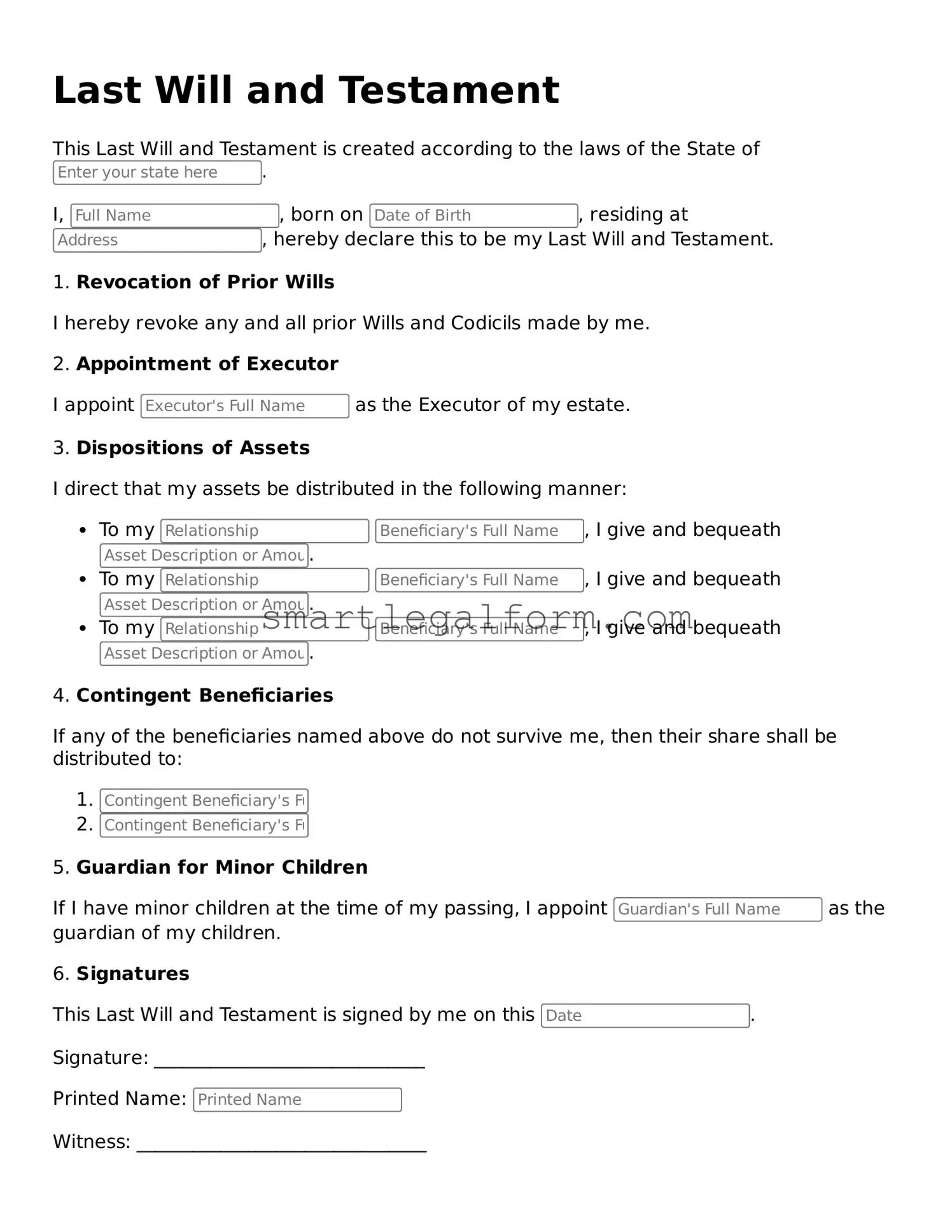Attorney-Approved Last Will and Testament Form
A Last Will and Testament is a legal document that outlines how a person's assets and affairs should be managed after their death. It serves as a crucial tool for ensuring that one's wishes are honored and that loved ones are provided for. Understanding the importance of this form can help individuals make informed decisions about their legacy.
To begin the process of creating your own Last Will and Testament, click the button below to fill out the form.
Fill Out Your Form Online
